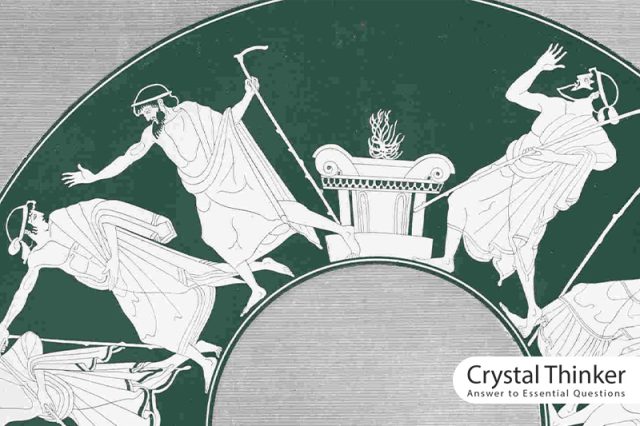What is dithyramb? Have you ever heard the word? If we want to define dithyramb in a short phrase, we have to say the mass hymn in honor of the wine god Dionysus. This type of hymn dates back to Greece’s early seventh century BC.
General and brief information about dithyramb
Dithyrambs were popular at other festivals at the time. Dithyrambs’ performance was magnificent and spectacular. The ceremony was as follows: After the foreword by the group leader, the two choirs inexpensive costumes, consisting of 50 men and another 50 boys, sang and performed circular dances around the altar of Dionysus.
In addition to the song sung by the group, Auloi, which is a kind of wind instrument with a double reed, was also present in this group and played with other tools.
Origin of the word dithyramb
The word dithyramb has no definite origin. An old hypothesis about this word says that the root of this word is Phrygian or Pelasgian language (Versnel, 1970).
The dithyramb was composed by Simonides, Bacchylides, and Pindar.
Regarding Pindar, we have to say that he is the only one whose works have remained in their original form.
When dithyramb was popular, it was also the heyday of the Greek anthem. Of course, not much information is available about the dithyramb of Simonides.
The first dithyramb
Researchers attribute the first dithyramb to Sir Arthur Wallace Pickard-Cambridge (Pickard-Cambridge, 1997).
What do you know about Bacchylides’ ode 18?
Bacchylides’ ode 18 is extraordinary. In a choir, several people talked, and there was a soloist in the group. Scholars have done much research on it and concluded that the dramatic and imitative structure of the poem is related to Aristotle’s famous claim in poetry.
Poets such as Timotheus, Melanippides, Ciencias, and Philoxenus, From about 450 BC onwards, used more amazing instruments of language and music.

The term may also refer to any poem that is inspired. It is also known as a highly passionate statement or writing. Of course, keep in mind that the poem’s theme is usually praising a specific subject. If we want to refer to modern examples, we can name Friedrich Nietzsche’s Dithyrambs of Dionysus (1891) and Gabriele d’Annunzio’s “Alcyone” (1904).
Various festivals and dithyrambs
Interestingly, in the past, in Dionysus festivals, such as Dionysia and Lenaia, group competition, dithyrambs singing, and dancing were significant. Each tribe consisted of two choirs, one group of men and the next group of boys.
In the late fifth century BC, dithyramb became the poets’ favorite means of experimenting with new poetry or music. Poets such as Timotheus of Miletus, Cinesias, Melanippides, and Philoxenus of Cythera started this movement.
This genre gradually lost its importance in the fourth century BC. Still, the exciting thing is that the dithyrambic competitions continued and did not end long after the Romans conquered Greece.

Dance dithyrambic
The dithyrambic choir danced so that they came for a grand march and entered the theater, moving around the orchestra and singing.
The choir then danced in a circle counterclockwise and continued to dance counterclockwise.
In general, music and poetry were considered more important than dance. However, the choir has also been fantastic. Because the people who danced tried to harmonize with the song. If we want to give an example of this type of dance, we can mention Indian group dances.
A poet named Pindar, whom we introduced to you earlier in this article, has composed a piece of the dithyramb, which is very famous for its “Victory Poems.” He describes a crazy dance that belongs to It was the religion of the god Dionysus.

Other information about dithyrambs
Most of the information that is available to us now comes from Athens. Evidence suggests dithyrambs have spread to many parts of mainland Greece.
Delphi is a place built many years ago as a theater overlooking the Temple of Apollo.
Even in Epidaurus, the performance of dithyrambs was typical. People hold a sports and drama festival here every four years.
Dithyrambs were common until the second century BC, but tragic and comedic plays gradually flourished. We now have a few records of their performance.
Aristotle considers dithyramb to be the source of Greek tragedy.

Dithyrambs are sometimes associated with the flute, but we abound. But there are no clear reasons for choosing the type of instruments used to accompany dithyrambs.
Therefore, we can not correctly guess the reasons for choosing the instrument.
We have already mentioned a poet named Pindar in this article. It is interesting to know that he owes the power of composing his glorious and perfect poems to the teaching of Lasus of Hermione. His teacher trained pindar in the elements of Dithyrambs poetry.
Dithyrambs had spectacular characters and combined poetry well with the music. The adjective “dithyrambic” in modern literature often describes an eager movement in sonnets and ode.
Conclusion
Did you know about Dithyrambs before reading this article? Did you know where these hymns originated in the beginning? Why did it last so long?
We hope you find the information presented in this article helpful and exciting. We are glad that you are with us and reading the articles.
We hope we can write great articles for you in the future to enjoy reading them. If you follow us on social networks such as Facebook, Twitter, and Instagram and write your comments for us, you will help grow and improve our articles’ quality. We enjoy being in touch with you. If this article caught your eye and provided you with helpful information, please share it with your friends so that they can learn more about it.
Resources:
- Versnel, H. S. (1970). Triumphus: An Inquiry Into the Origin, Development, and Meaning of the Roman Triumph. Brill.
- Pickard-Cambridge, A. W. (1997). Dithyramb Tragedy and Comedy. Amsterdam University Press.








